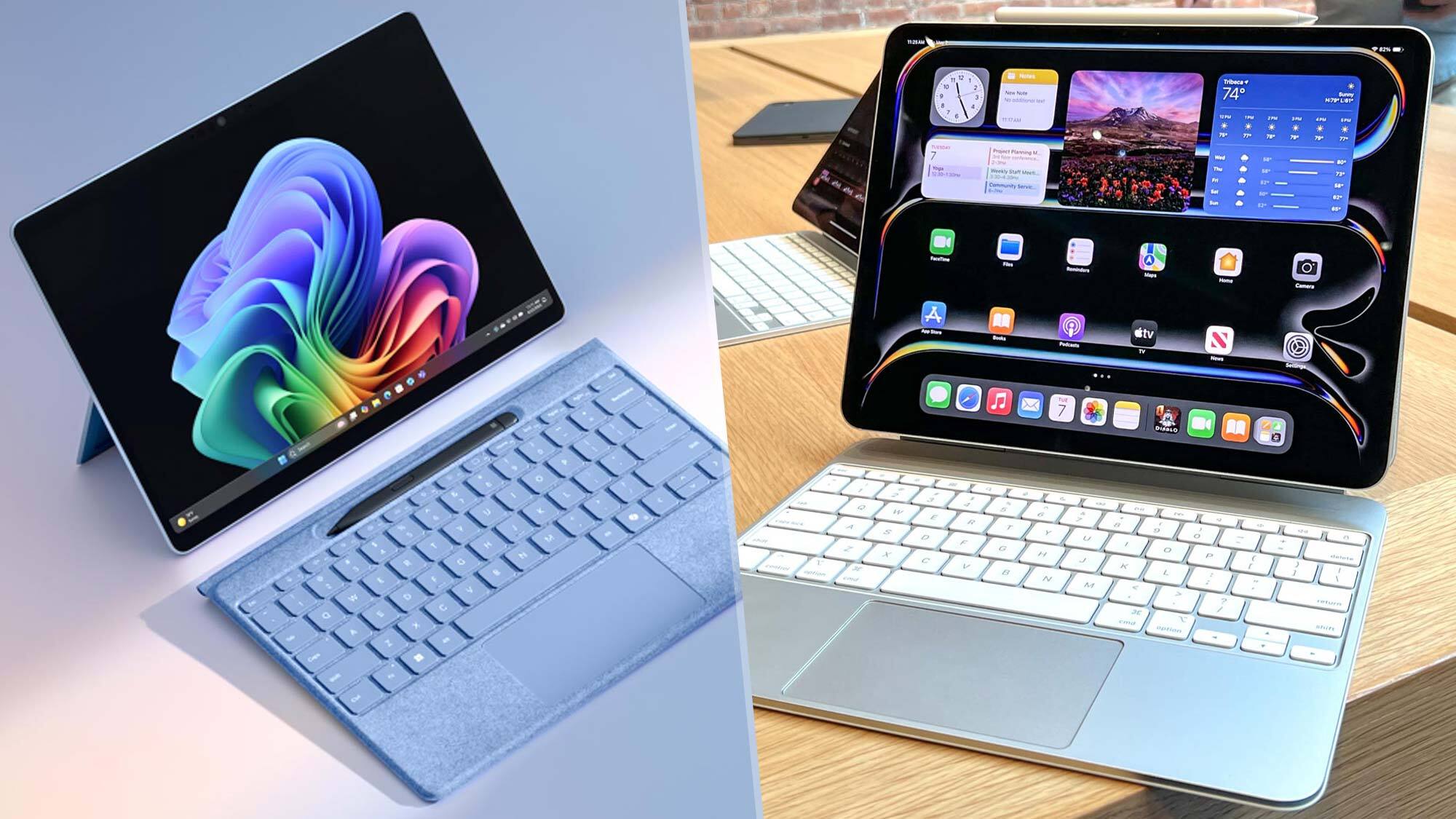
The Microsoft Surface Pro 11 could be the most exciting Surface Pro in ages. Not only does it sport an OLED panel, but it also features the new Qualcomm Snapdragon X processors — both of which are firsts for the tablet line. The latter’s NPU (Neural Processing Unit) should facilitate the AI features coming to Windows 11, which could make the new Surface Pro all the more interesting.
The Surface Pro 11 isn’t the only tablet with AI capabilities, however. Apple recently released the iPad Pro 2024, the first Apple device with the new M4 processor, which features an enhanced version of the Neural Engine, or this chip’s NPU. This aspect makes the usual Surface Pro vs. iPad Pro debate a tad different from previous years.
Until the Surface Pro 11 releases and Apple details how iPadOS 18 will utilize the Neural Engine, it’s hard to say which could have the better AI capabilities. However, we know enough about both slates (especially the iPad Pro M4 I reviewed) to compare their most notable features and how they could give either an advantage (or disadvantage) over the other.
I’ll update this post once we’ve reviewed the Surface Pro 11. For now, let’s discuss the Microsoft Surface Pro 11 and iPad Pro 2024 to see which tablet is potentially the best one for you.
Surface Pro 11 vs iPad Pro 2024: Specs
Surface Pro 11 vs iPad Pro 2024: Price
The Surface Pro 11 is available for preorder right now from Microsoft's website, starting at $999 or $1,499 for the model with the OLED display. The entry-level $999 model comes with a 13-inch (2,880 x 1,920 pixel) touchscreen, a Snapdragon X Plus chip, 16GB of RAM and a 256GB SSD. You can get the same model with a 512GB SSD upgrade for $1,199.
Upgrade to the $1,499 OLED Surface Pro 11, and you get the more capable Snapdragon X Elite chip, 16GB of RAM and a 512GB SSD. You can pay $1,699 for the same model with a 1TB SSD or $2,099 to order one with 32GB of RAM and the 1TB SSD. All models come in Platinum and Black. Select models are also available in Sapphire and Dune (gold).
The iPad Pro 2024 is now available from Apple’s website. The 11-inch model starts at $999, while the 13-inch model starts at $1,299. Each costs $200 more than their respective iPad Pro M2 counterparts. Both iPad Pro models come in Silver or Space Black.
Naturally, upgrading components bumps up the price. For instance, the 11- and 13-inch iPad Pro cost a hefty $1,699 and $1,999 (respectively) if you select nano-texture glass (which requires upgrading to at least 1TB of storage). Note that the higher-end M4 chip (with 10 CPU cores and 10 GPU cores) only comes with 1TB or 2TB of storage options.
Price comparison is somewhat tricky. For instance, Microsoft's 13-inch Surface Pro has a cheaper starting price. However, Apple offers the more affordable OLED tablet of the two. Things become more complex as we start including upgrade options, though it seems Apple’s upgrades cost much more as you keep going.
We can’t forget about the slates’ peripherals. The new Surface Pro Flex keyboard costs $349 on its own but $449 with a Slim Pen. The new Magic Keyboard also costs $349 while the new Magic Pencil Pro costs $129. In total, Apple’s combined peripherals cost $29 more than Microsoft’s. Still, you’re paying a substantial amount for these peripherals, no matter which slate you opt for.
Surface Pro 11 vs iPad Pro 2024: Design
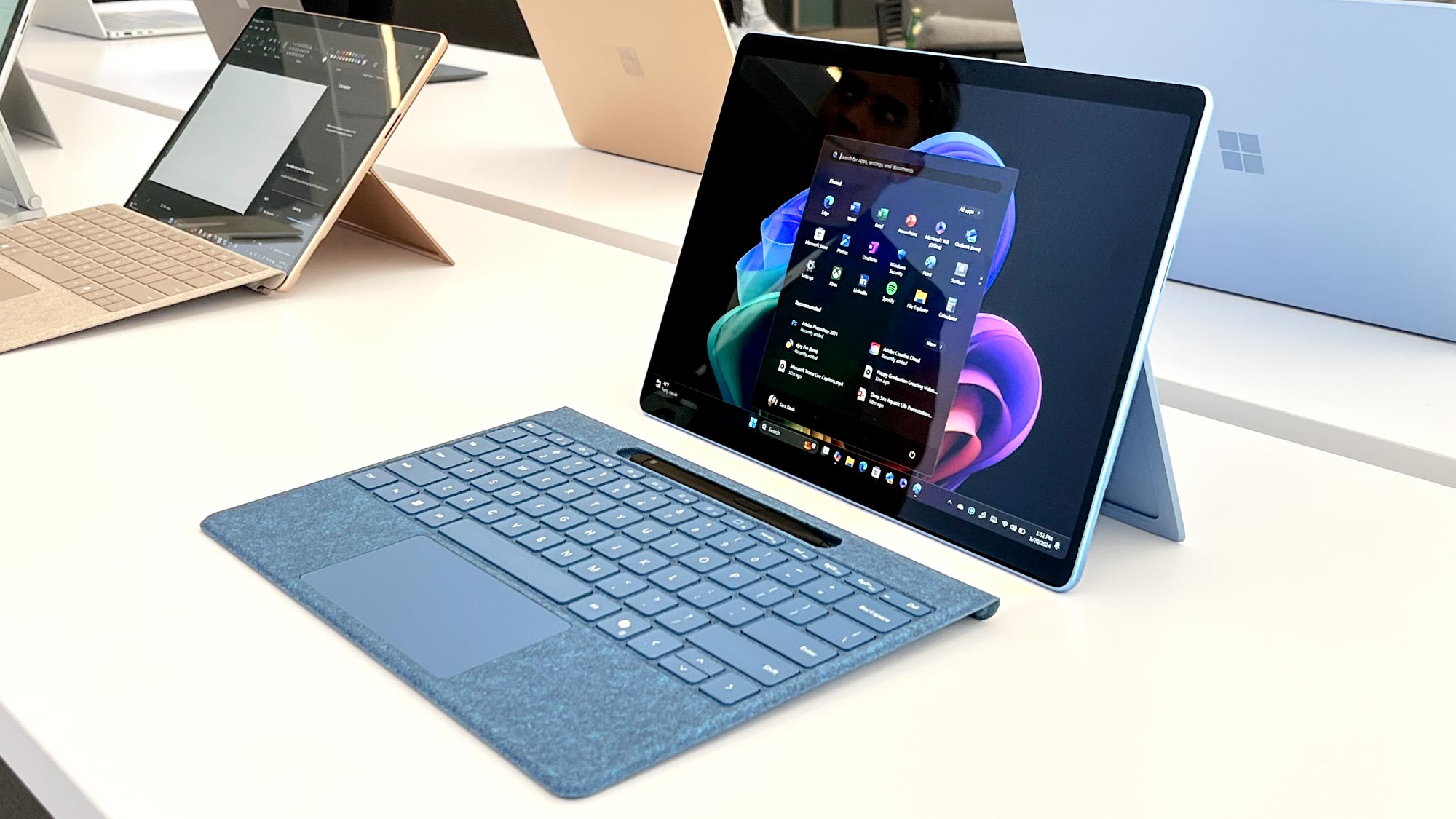
Design-wise, the Surface Pro 11 isn’t all that different from its predecessors. It’s still a thin and lightweight Windows 11 machine for those who don’t want to lug around a full laptop. If you liked the Surface Pro’s elegant design, you’ll be happy knowing that aspect hasn’t changed.
Though it has a familiar design, the Surface Pro 11 does have a major new feature — an OLED option. As my colleague, Alex Wawro said when he went hands-on with the tablet, the OLED offers contrasts and depths of color that helped it stand out even in Microsoft's brightly lit briefing rooms. Though the LCD and OLED displays of the Pro 11 support Dolby Vision HDR and 120Hz adaptive refresh rates, the latter boasts a 1,000,000:1 contrast ratio compared to the 1,200:1 contrast ratio of the LCD.
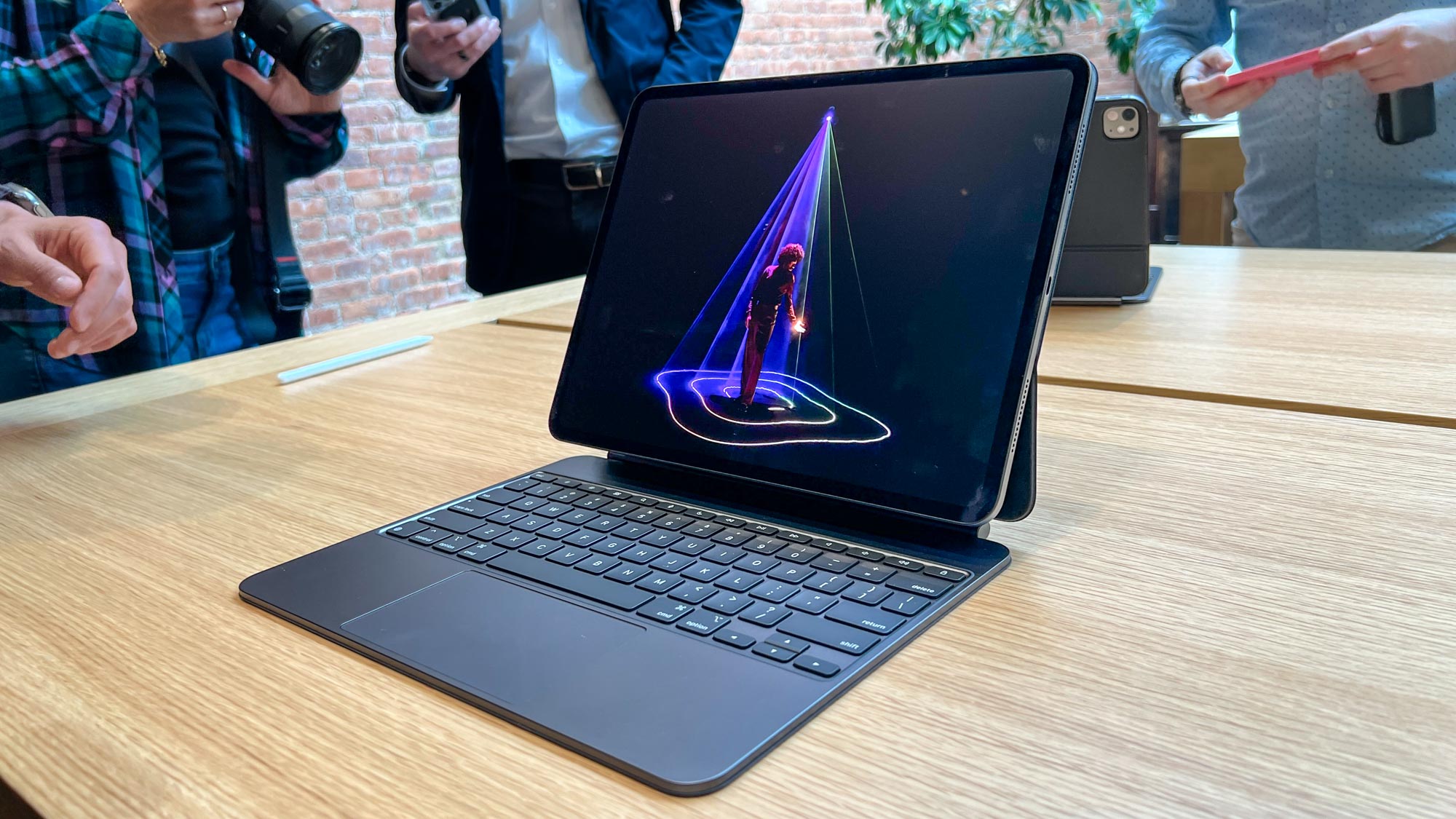
The iPad Pro 2024 also appears identical to its predecessor. Like previous models, it’s a solid piece of aluminum with a large display and thin profile. However, holding the tablet reveals that you’re dealing with an all-new device. The iPad Pro went on a bit of a diet.
The 11- and 13-inch iPad Pro models are thinner and lighter than their predecessors. The size and weight differences might not look like much on paper, but they make a huge difference in the real world. I was able to hold the iPad Pro for much longer than the iPad Pro M2 thanks to its thinner profile and lighter weight.
I’m looking forward to going hands-on with the Surface Pro 11 to see how it feels compared to the iPad Pro. Regardless, both are thin and light devices that are easy to hold and travel with.
Surface Pro 11 vs iPad Pro 2024: Display
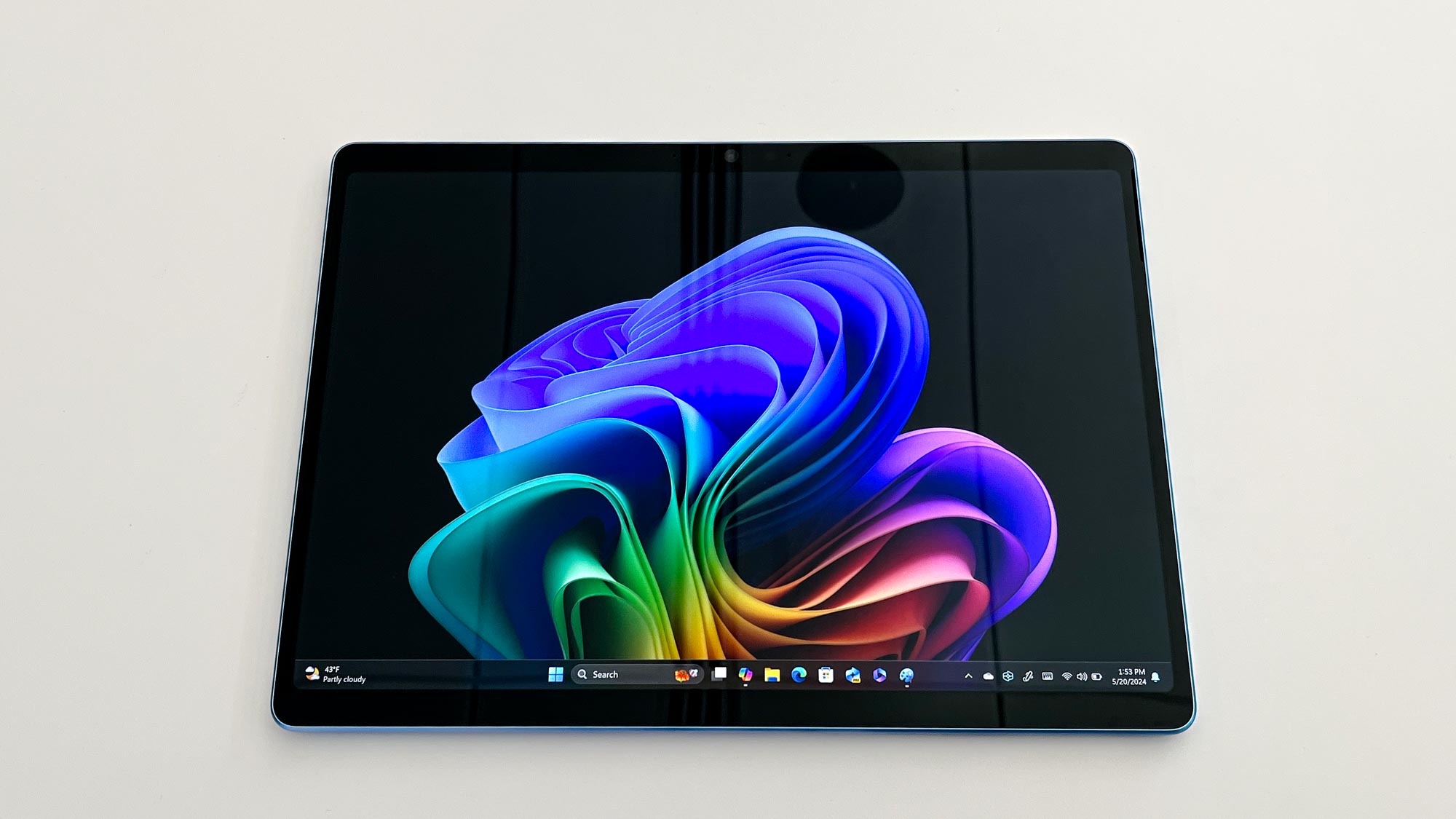
The base Surface Pro 11 has the same 13-inch (2,880 x 1,920 pixel) LCD 120Hz screen as its predecessors. It also will support Dolby Vision HDR just like those models did.
These touchscreens have always been one of the high points of the Surface Pro tablets, but the most exciting aspect of the new 11th Gen models is the addition of the OLED upgrade. While it costs $500 more than the entry-level Surface Pro 11, based on our hands-on experience, it could be worth it.
The Surface Pro 11’s OLED display made it easy to spot from across the event room because Windows 11’s black background had a depth of darkness the LCD displays on Surface Laptop 7 units scattered around the room couldn't match.
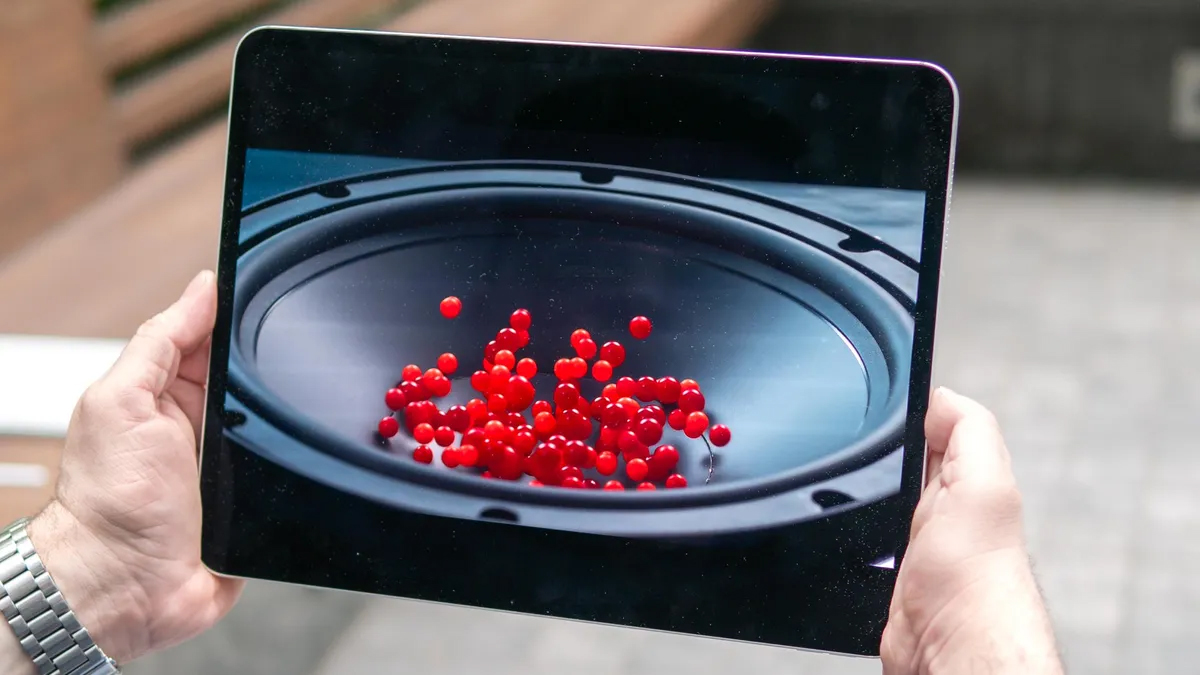
The iPad Pro’s new design is slick but the OLED display could be this tablet’s main selling for some people. To my eyes, the screen is both bright and colorful, and the contrast between dark and light elements is astonishing, delivering beautiful photos and videos. It’s really quite striking. The 120Hz refresh rate ensures those beautiful images move smoothly. The iPad Pro 2024 has one of the most impressive OLED displays I’ve ever seen on a tablet — if not the best.
We can’t fully judge which tablet has the better OLED panel (or better display overall) until we’ve tested Microsoft’s slate, but I’m looking forward to the match-up.
Surface Pro 11 vs iPad Pro 2024: Performance
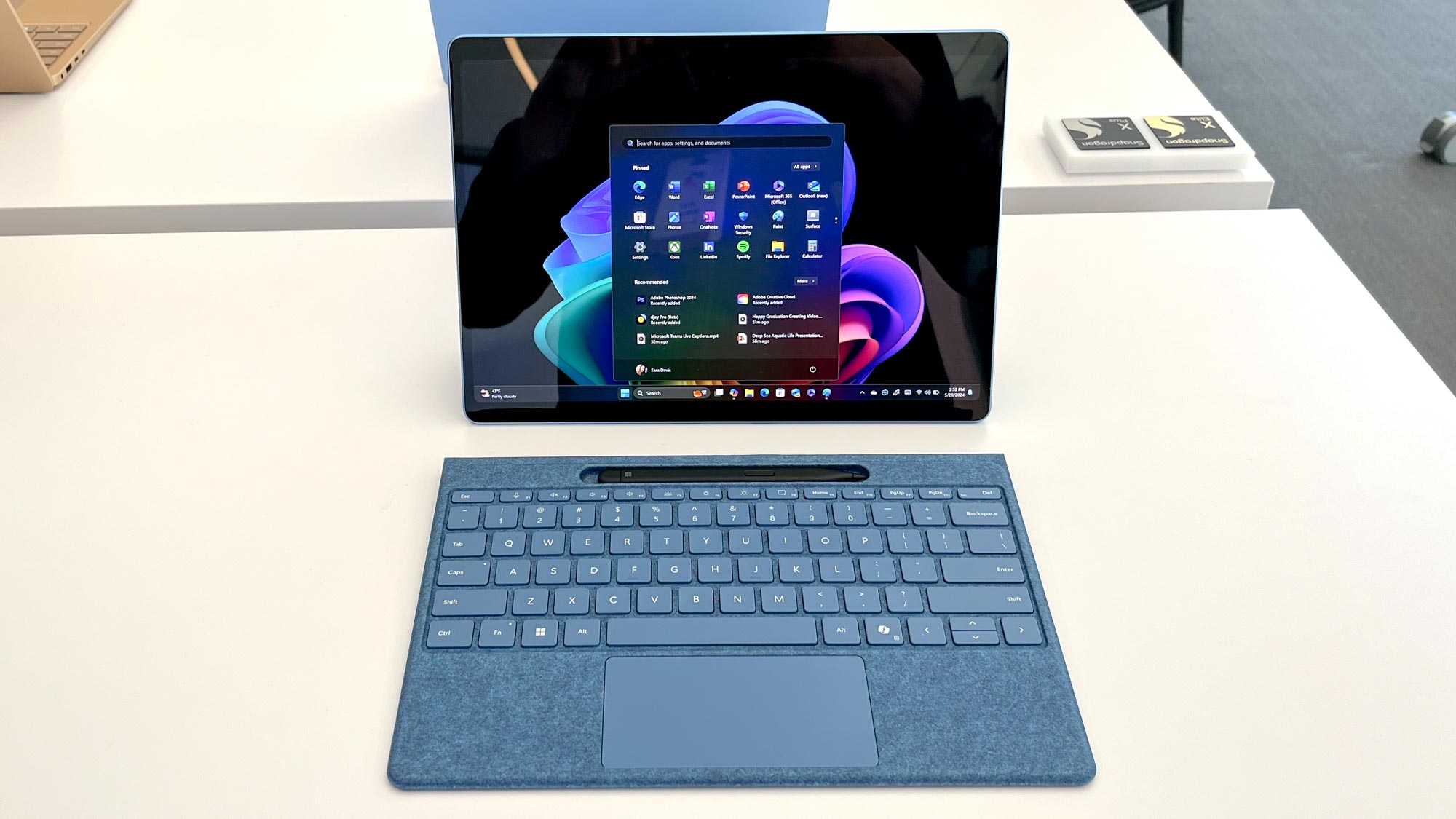
The Snapdragon X Plus and Elite chips inside the Microsoft Surface Pro 11 are new players that could shake up the performance landscape of Windows tablets in a big way. If Qualcomm’s claims about the power and efficiency of its processors are true, the Surface Pro 11 could finally be the premium tablet it’s been billed as from the beginning.
During our brief hands-on time with a Surface Pro 11 demo unit, we found the tablet plenty fast for day-to-day work. We tried out a few different models featuring Snapdragon X Elite chips, checked out demos of Copilot features and toyed around in Windows 11. It all felt as fast as a modern MacBook. That said, we'll have to put these slates to the test in our performance benchmarks to see how well they stack up against the competition.
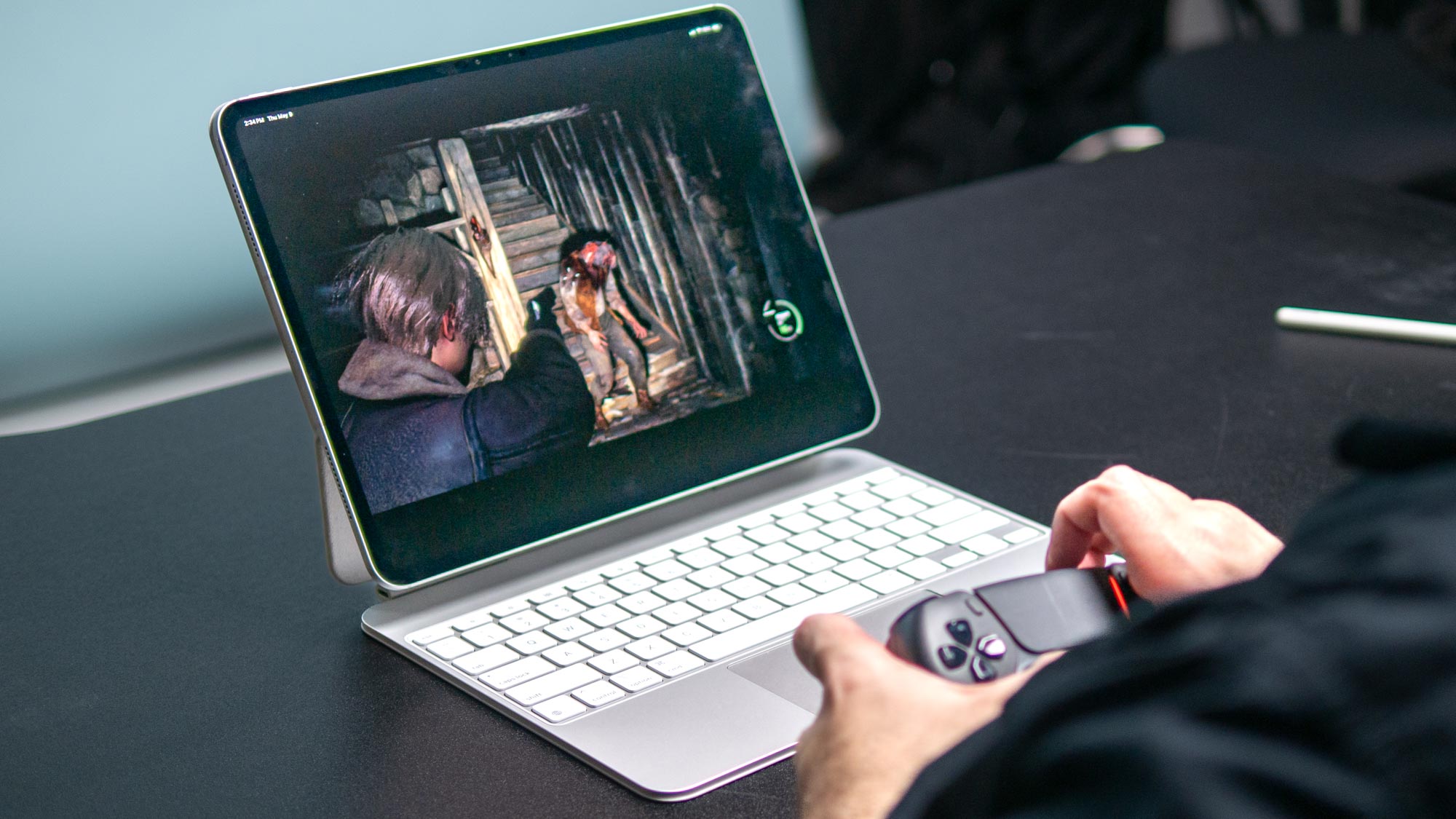
The 13-inch iPad Pro I reviewed packs an M4 chip with a 10-core CPU, a 10-core GPU and an updated Neural Engine. Our tablet has 1TB of storage but no nano-texture glass. Toss in Wi-Fi + Cellular, and this review unit is valued at $2,099 as configured. Like the M3 chip, which also utilizes 3nm technology, the M4 processor features hardware-accelerated mesh shading, ray tracing and Dynamic Caching—all of which are firsts for the iPad platform.
I used the iPad Pro as a laptop, and the tablet had no problem handling my regular workflow, which usually involves juggling multiple open tabs and applications. The iPad Pro never slowed down, even when I tossed a YouTube video into the mix. The tablet also handled digital comics without a hitch.
The iPad Pro also did well in our benchmark tests. On Geekbench 6, which tests overall CPU performance, the M4-driven iPad Pro performed almost twice as fast as its M2 counterpart. Resident Evil 4 couldn’t hit 60 frames per second, but it ran smoothly enough when I played.
Surface Pro 11 vs iPad Pro 2024: Peripherals
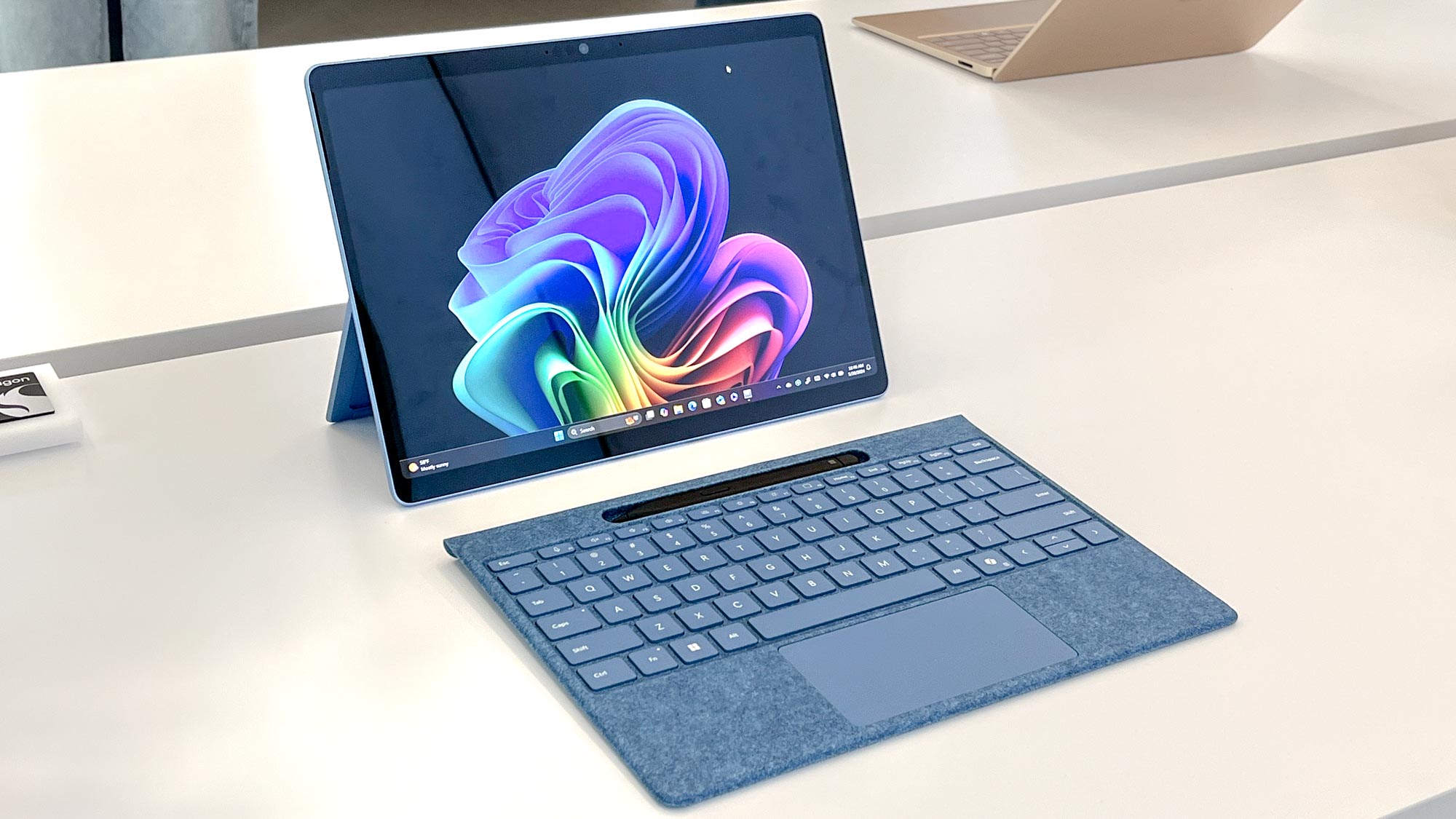
Both tablets have keyboard peripherals, which are necessary if you plan to use them like laptops. However, as we said in the price section, these peripherals aren’t cheap.
Microsoft is releasing the new Surface Pro Flex keyboard, which is a redesigned type cover for the Pro 11. Thanks to its built-in battery, you can use the keyboard even when it's detached from the tablet. Microsoft claims the keyboard can last for up to 41 hours. The Surface Pro Flex keyboard costs $349 by itself and $449 with a Slim Pen.
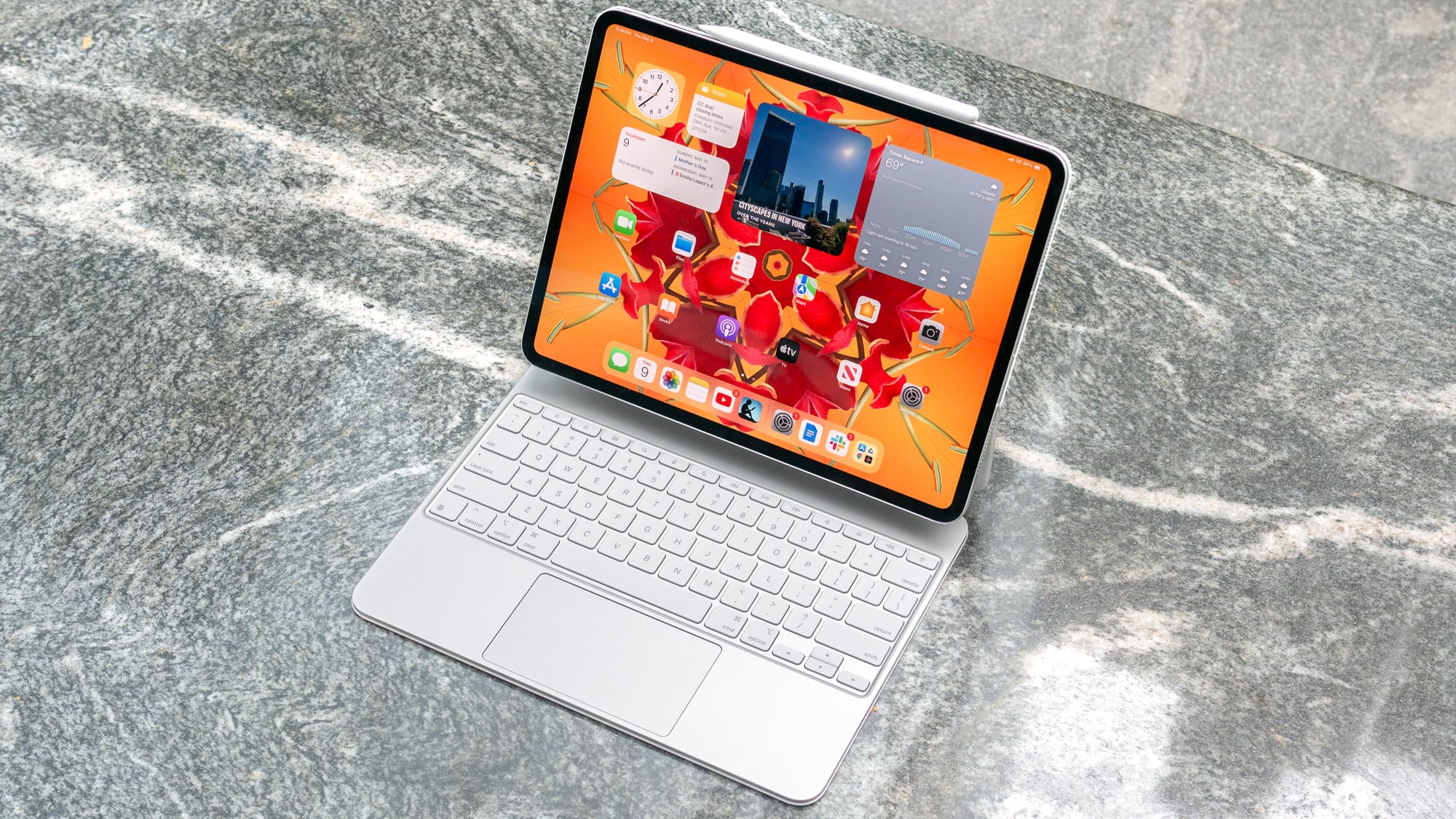
The new Magic Keyboard’s palm rests and touchpad have an aluminum finish reminiscent of the best MacBooks. Similarly, the larger touchpad reminds me of an Apple laptop, as does the new Magic Keyboard’s flatter hinge. As a bonus, this peripheral feels lighter than before and doesn’t add a lot of weight to the iPad Pro. While this peripheral is light, it carries a hefty $349 price tag.
The new Apple Pencil Pro has some extra features over the basic Pencil. This includes a rollable barrel you can rotate to intelligently switch pen styles, haptic feedback and squeeze to control the input in newer ways. The new barrel roll feature is particularly impressive since you can change a line’s thickness by twisting the pen’s orientation. This peripheral costs $129. However, you can always get the $79 Apple Pencil with USB-C, though it lacks the Pro's advanced features and doesn’t wirelessly charge when magnetically attached to the iPad Pro.
Surface Pro 11 vs iPad Pro 2024: Outlook
Once we’ve tested the Microsoft Surface Pro 11, we’ll have a fuller understanding of its capabilities. Because of that, we can’t say whether it’s a better option than the iPad Pro M4. Ultimately, it might boil down to whether you’re invested in the Apple ecosystem or are more accustomed to using Windows.
For comparisons, I’m eager to see how the Surface Pro 11’s OLED display compares to the iPad Pro’s. As I’ve said in my review, the latter is currently the most impressive OLED I’ve ever seen on a tablet. Then there’s the Snapdragon X processor(s) that promise to deliver a serious boost in performance and efficiency for the Surface Pro 11. Lastly, I’m eager to see which device could serve as a better laptop replacement.
I’ll update this post once we’ve reviewed the Microsoft Surface Pro 11, so stay tuned!







